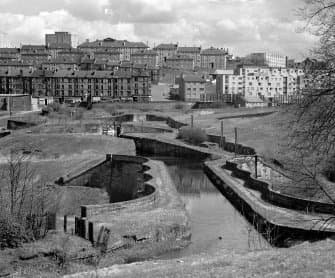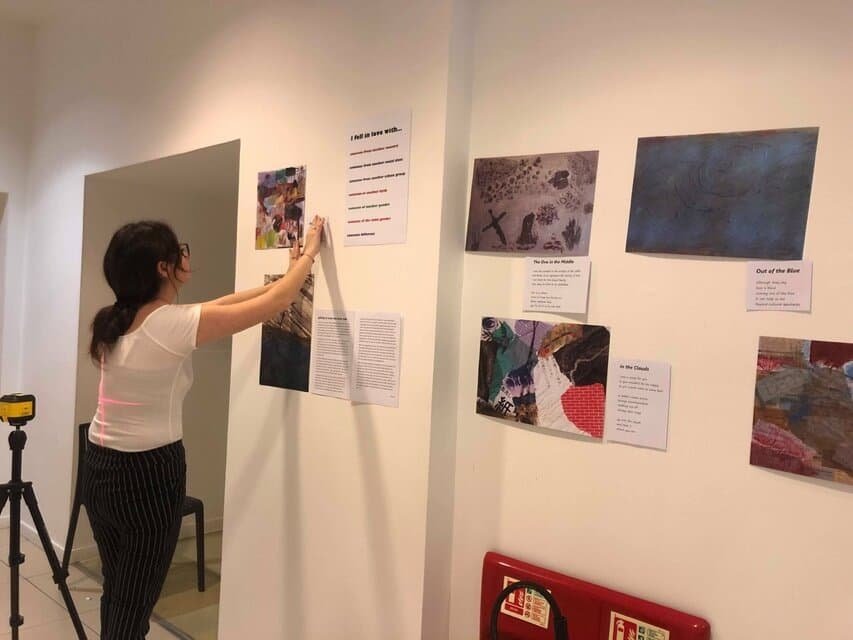Hello! My name is Kirsty Reid and I’m a student on the MSc Museum Education course at the University of Glasgow. For the last month I’ve been working at Maryhill Burgh Halls as part of my student placement, which I’ll be sharing a little bit about with you today.
I chose Maryhill Burgh Halls as my placement selection as I was born and raised in Maryhill myself, and I thought this would be a great way of getting to know my own local history a bit better whilst gaining some experience in museum learning.
You might be wondering what museum education or museum learning actually is (I get asked this a lot by family and friends as no one has a clue what I actually study!). The education part of museums focuses on interpretation (such as the little written labels you see next to objects), delivering educational sessions to schools or local community groups, and designing or adapting new learning resources such as trails for people to participate in when they visit. You could say a museum educator bridges the gap between the curator’s exhibitions and the visitor.
My project for my placement was to create 3 new learning activities for the spring and summer period, which could be done at home. My first task was to start researching the collections at the Halls, and information about the local history of Maryhill to get some ideas. I came across the Maryhill Stained Glass Panels which I thought were really interesting. They were created by Stephen Adam in the 1800s for the Halls, and depict 20 different local industries that were mostly located along the Canal. One of these was the Glass Works, and was where the Murano Street Student Village is now. I discovered Murano Street is named after the Murano Glass Works in Venice!
Maryhill Stained Glass Panels
What is sad to see is that these local industries have slowly disappeared over the years, but we can learn about what kind of place Maryhill used to be through the Maryhill stained glass panels. With this in mind, I came up with two activities directly inspired by the panels. One of the panels I particularly liked was the Papermaker. Paper is a material that has remained in our daily lives, yet we are far removed from the process of how it is made. Papermaking is actually a relatively simple process, and by making your own you can learn about how the man in the Papermaker panel made paper down by the River Kelvin. I decided to create a Handmade Paper tutorial, which you can do at home with only a few materials. I had lots of fun making my own handmade paper for the example!
The Paper Maker
Another aspect of the panels I liked was the visual design. They’re very detailed, and the colours are vibrant, especially when the sun shines through them. The second activity I came up with was a collage artwork, which you create in the style of a stained glass panel. It also includes a walk around your local area to discover the patterns and colours you use to create the collage. If you live in Maryhill this is a great way to discover some of the outdoor heritage in the local area!
I wanted to expand my idea of the outdoors a bit more, so for my final activity I adapted one of the heritage trails you can find on the Maryhill Burgh Halls website. As we have all been stuck indoors for the majority of the last year during the lockdowns, it’s important that we all look after our mental health. It has been a stressful time, but getting into nature and going on walks can help tremendously with making us feel a bit more relaxed. With this as my focus, I adapted the South Maryhill heritage walk to create the Maryhill Mindfulness Trail. Using ten stops from the original trail, this walk takes you in a loop around some peaceful spots such as the Canal and the Kelvin Walkway. At each stop you also learn a bit about it’s history and a mindfulness technique to help you enjoy a tranquil walk. The wonderful designers from Boon Studio in Glasgow created the design for the guides, which you can pick up at the Halls to try yourself!
Maryhill Mindfulness Trail
A mindful walk along Maryhill Canal!
I had so much fun creating all of the learning activities, especially the Mindfulness trail, as I really enjoyed exploring places in Maryhill I’ve known my whole life, in a new way. I hope these activities will inspire you to get to know Maryhill and what’s on offer at Maryhill Burgh Halls a bit more, whilst trying something new! If you would like to get involved, please email info@mbht.org.uk for more information.
I’ve had a great time working at Maryhill Burgh Halls, I gained lots of new skills in working with budgets, external partners and project management. Huge thanks go to Nicola, the Heritage and Community Engagement Manager, who facilitated and was always happy to help with my project. I came to know that the Halls are very much loved by the community, and will continue to be a hub where local people can get together to enjoy the collections. Although my time as a placement student is over, I hope to come back as a local visitor next time!









































